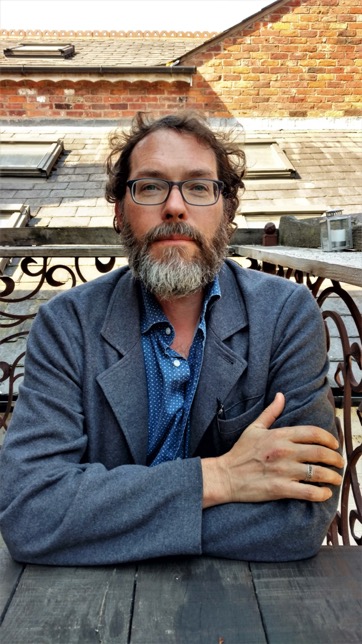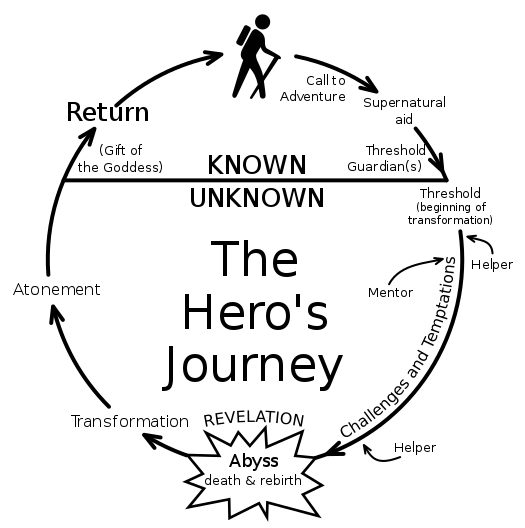Takeaway
It can be helpful to see the circle path of the hero's journey as the healer's journey, the path that we take through our lifelong medical education. For the true healer, this is not a journey we make just once, but periodically we embark on exploring new depths of the suffering of the world, reaching deep into ourselves to find new resources for healing to bring into our work and world.

Lifelong Learning in Clinical Excellence | July 18, 2019 | 4 min read
By David Kopacz, MD, University of Washington
The circle of the hero’s journey
As a psychiatrist at Puget Sound Veterans Affairs Puget Sound, Washington, I’ve been using Joseph Campbell’s model of the hero’s journey to help veterans create new stories of their lives, integrating military and civilian elements through reading and discussing narratives from movies and books about the separation, initiation, and return of heroes and heroines from modern and ancient stories.
This pathway starts with separation from what is known, leads into the unknown, and then returns the hero or heroine back to where they started, but now transformed. This is the pathway of initiation found throughout cultures and history. We retain elements of this in medical training and I have also been using this model with healers to contextualize burnout.

How to use the circle of the hero’s journey with patients:
With the circle of the hero’s journey, you can help your patient look at what stage they are currently in with regard to challenges they are facing, physical or otherwise:
1.) Known world: Are they happy where they are and everything is going well?
2.) Call to adventure: Are they feeling called to some change or adventure, but not sure what it is yet?
3.) Stepping into the unknown, crossing the threshold: Are they struggling to cross a threshold, knowing that their current way of life is not working and they need to change somehow? Do they have a mentor to help guide them into the unknown? Do they need to find a mentor?
4.) Abyss: Are they in the abyss, the dark night of the soul?
5.) Transformation: Are they in the process of transformation, a change in their identity?
In thinking about transformation, I have come to see that this is different than change. Change is more superficial, changing something we do, such as learning a new skill. Transformation is really about identity, we change who we are, not just what we do, and this is why it is so painful, like going into and breaking out of a cocoon.
Helping patients integrate both the feminine and the masculine
Joseph Campbell, who drew on Carl Jung’s “Symbols of Transformation,” also looks at how we integrate the masculine and feminine as we go around the circle. In the myths of male heroes, there is some kind of masculine struggle in the abyss, and then a reunion with the feminine (rescuing the princess). In working with veterans, I think of this not so much as an external relationship as an internal one, after training in the hyper-masculine world of war, reconnecting with the heart.
This is a step for both male heroes and female heroines – our hearts get broken in the struggles, we lose heart, and we need to tend to our wounds and reconnect with compassion for self and others. The step of atonement is sometimes written by Campbell as at-one-ment. We need to integrate the inner transformation and get ready to bring the gift we have found in our wounds out into the world.
Campbell also speaks about coming into relation with the masculine at this step. In the myths it is about being recognized by authority and being welcomed back into the kingdom after having been away in battle or quest. Thus, for both men and women, these two steps are about integrating and coming into relation with the inner and outer masculine and feminine.
The next step is crossing the return threshold. While this may seem like it would be a walk in the park, it is often a very difficult step for returning veterans, and for all of us. Society is skeptical, and even rejecting, of those who have taken the road less traveled and ventured into the unknown. I tell veterans that in this model they are supposed to feel rejected by society, and part of their work is going through the “transformations of the hero (or heroine).” For veterans this means answering the question, “How can you be a hero and a warrior without using a weapon?” In other words, how can the essence of heroism be transformed into a new social role?
The healer’s journey
It can be helpful to see the circle path of the hero’s journey as the healer’s journey, the path that we take through our lifelong medical education. For the true healer, this is not a journey we make just once, but periodically we embark on exploring new depths of the suffering of the world, reaching deep into ourselves to find new resources for healing to bring into our work and world.
Burnout as part of the healer’s journey
I have been thinking of burnout in this way. Maybe burnout is a necessary step for us to grow as healers. There are intrinsic elements in our work that change us, working with illness and death. When we get “infected” by our work, we incubate until we can find a cure and healing path. There are also extrinsic elements of burnout, such as institutional pathologies and frameworks. In modern times, healing has been regulated and institutionalized, and institutional economic and organizational demands are sometimes at odds with the demands of healing. We must continually work to reconcile the essence of our work as healers with the daily reality of the institution.
Stay tuned to CLOSLER for Part II of Circle Medicine next week . . .

